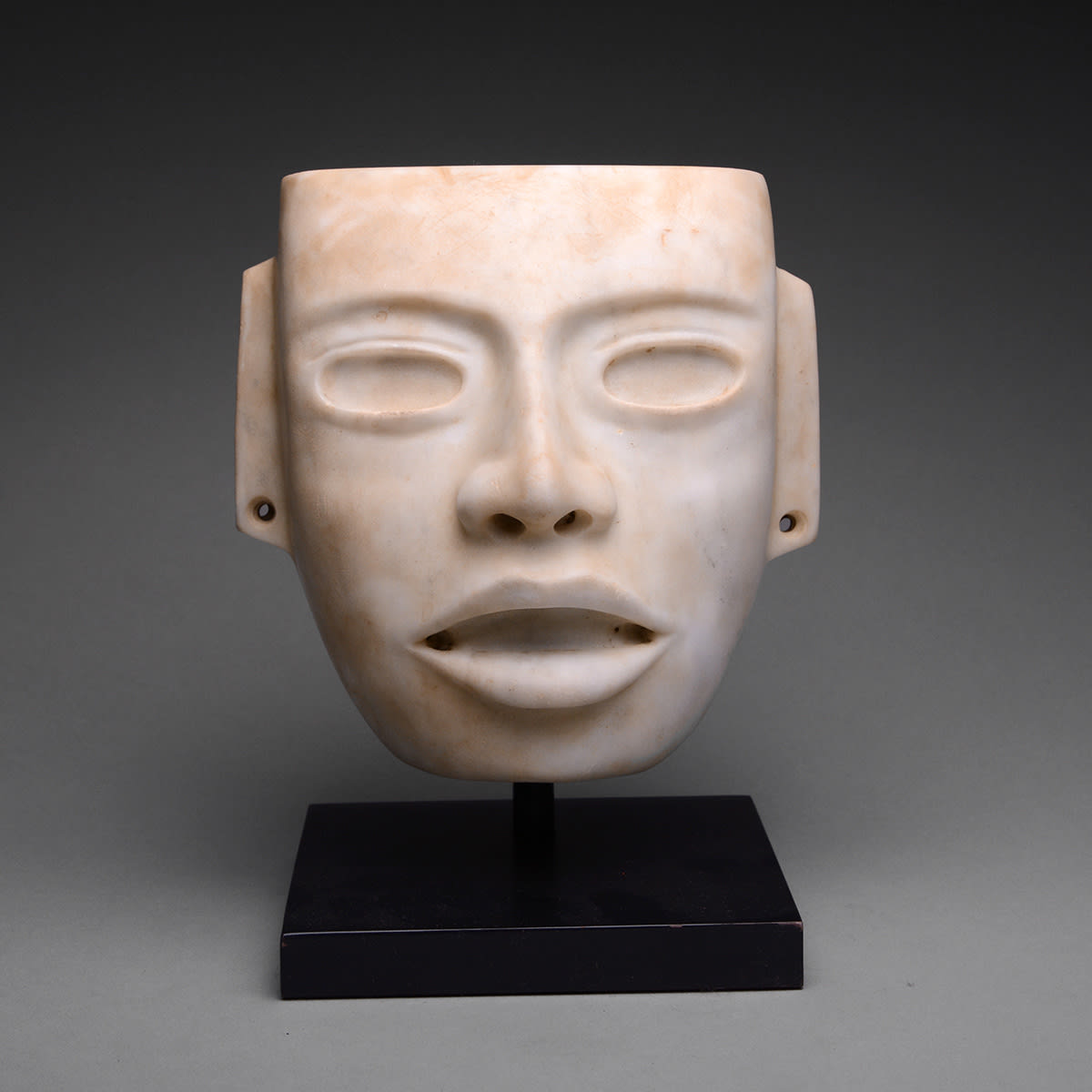Teotihuacan White Stone Mask, 250 CE - 650 CE
Stone
17.5 x 17.8 cm
6 7/8 x 7 in
6 7/8 x 7 in
CK.0260
Further images
Teotihuacan is referred to as the city of the gods. By 600 A.D. it was the sixth largest city in the world. Situated in a temperate, fertile basin its fame...
Teotihuacan is referred to as the city of the gods. By 600 A.D. it was the sixth largest city in the world. Situated in a temperate, fertile basin its fame spread as quickly as its prosperity, with well-established trade routes and a culture that is still impressive today. With a booming economy, an urban elite arose fostering intellectual activity, monumental building and the belief Teotihuacan was where the cosmos and the present cycle of life began. The concept of monumentality can apply not only to great architectural structures such as the Pyramid of the Sun, but also to much smaller objects which have an intensity that makes them larger than life. Stone masks are perhaps the most famed works of Teotihuacan art. Mystery surrounds these mask, as they are believed to have been part of funerary furniture, yet none have been found in burial chambers. Rather, they have been discovered near temples and complexes aligning the Street of the Dead. Scholars speculate they were attached to wooden armatures in temples to represent deities who are in the process of becoming gods. Hence the drill holes that are commonly present in these masks. They may also have been worn on the arm as an insignia of an important person. Other facets of Teotihuacan’s artistic output include cylindrical vessels, which were the highly prized possessions of the wealthy elite. They were prestige objects that were both ceremonial and functional. From 250 A.D. onwards, objects made from clay increased dramatically, serving a wide variety of purposes and functions. Most impressive are sculptures representing host figurines or "puppets". Both categories were found in burials and caches. The host figurine commemorated important events within the city of Teotihuacan and other parts of Mesoamerica, portraying individuals of different rank and status (such as soldiers, merchants or bureaucrats), and occasionally divinities. Puppets, or articulated figurines, constitute a fascinating group of clay objects with moveable limbs. Although the great civilization of Teotihuacan met its untimely end around 700 A.D., by the hand of invaders, the creative spirit of the people lives on in their enduring artist creations and spectacular ruins.







